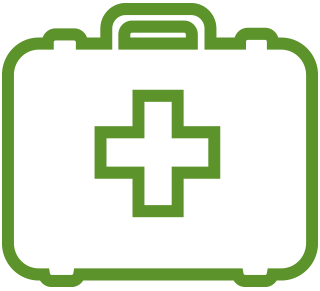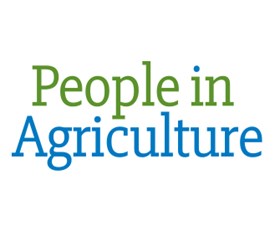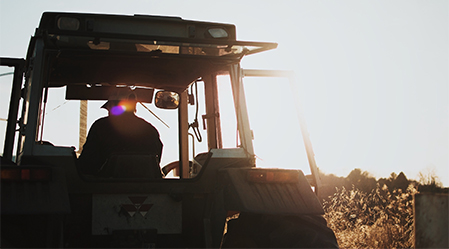Providing a Safe Workplace

We all deserve a safe place to live and work, and preventing injuries in the workplace should be a priority for everyone on the farm. The challenge with farms is that they are both workplaces and homes for some families.
For people working on the farm, there are very busy periods, long days, a wide range of weather conditions and work with potentially hazardous equipment, environments and substances. Older and younger family members are quite often at greater risk of harm if exposed to these hazards.
In addition to the obvious reasons for maintaining a safe environment for employees, contractors, family, visitors, and members of the public, there are also legal obligations when looking at health and safety in the workplace.
Farm businesses who don’t act to fulfil health and safety responsibilities face significant fines and penalties. Use the farm health and safety overview checklist as a starting point for working out what you need to do to make you farm safer.
Workplace health and safety (WHS) principles
An employer is required by law to provide every employee with a workplace that is, as far as reasonably practicable, free from risk to the employee’s health and safety. The laws also require that employees take steps to protect their own health and safety by following safety instructions, using safety equipment, and by speaking up if they feel they are being asked to do something they are not comfortable with.
It is important that you thoroughly cover work health and safety issues when inducting employees or contractors onto the farm. Use the checklists in the resource section below to help you and see Inductions section for more information.
Every farm is different. Even though there are similarities in work practices and risks, every farm needs its own risk control solution to get the best safety outcome. Work Safe Victoria provide a handbook ‘A Guide to Risk Control Plans’ that may be helpful when developing a plan for your farm.
Work Safe's top 15 farm safety tips
- Maintenance should be regular and carried out by a suitably-qualified person, particularly brakes on equipment
- Application of parking brakes prevents run overs, even on relatively flat ground
- Missing or inadequate guarding, particularly power-take-offs on tractors can catch clothes, hair or body parts
- Working alone increases risks if something goes wrong. Let someone know where you’ll be and when you’re due back. Take a mobile or two-way, making sure it is fully charged before you leave and check in. Have an in-house arrangement with the owner or manager for maintaining reasonable contact
- Use machinery equipment best suited for the job. Do not use machinery or equipment that you have not had training or experience, or without a statutory permit or license
- Separate people and moving machinery, including trucks making deliveries and pick-ups. Keep them away from power lines – look up and live
- Get home-made or modified equipment checked by a suitably-qualified person (e.g. a qualified electrician or mechanic)
- Set a good example by demonstrating safety expectations to workers
- Ensure workers are properly trained and qualified, including contractors
- Relying on someone’s (or your own) skill and experience can lead to over-confidence and risk-taking
- Having fall protection and using it prevents deaths, brain damage and permanent spinal injuries
- Wear a helmet when riding a quad bike, motorbike or horse and any other Personal Protective Clothing, Aids or Equipment required for that particular job
- Observe proper Manual Handling Procedures and other Codes of Practice
- Working areas of farms and farm machinery are no place for children
- Know your limitations
Darren is a farm manager on a farm in south west Victoria and one of his many responsibilities is to ensure the safety of everyone on the farm. Because safety is really important to him and everyone else on the farm, Darren thought it would be a good idea to put a sign up over his desk to remind him how to make the farm safer by identifying and removing any hazards. The sign helped Darren to think about safety even when he was busy with other tasks. This is the sign that Darren used.
|
'SAFER' PRINCIPLES |
||
|
See |
- |
identify the hazards to health and safety on the farm |
|
Assess |
- |
decide the risk associated with the hazard |
|
Fix |
- |
take appropriate action to control the risk |
|
Evaluate |
- |
check your controls are effective |
|
Record |
- |
record actions you take or plan |
OH&S: A Quick Reference Guide for Broadacre Agriculture - PDF
Health and safety legislation - Link
Farm health and safety overview checklist - Word Doc
Safety Induction for Employees - Word Doc
Contractor Safety Checklist - Word Doc
Health and safety management plans
To minimise work incidents or accidents, you first have to identify potential hazards or risks. To assist you in identifying these potential hazards, a number of checklists have been developed.
You can use the farm safety initial assessment report as a good way to start identifying specific hazards on your farm. This is made up of 75 questions and covers the most common causes of accident and injury on farms in general.
Once you have identified hazards and their risk levels on your farm, you can work on developing a health and safety management system. A health and safety management system is basically a set of plans, actions and procedures to prevent accident, illness, injury or fatality on the farm. The system works by eliminating or controlling hazards instead of dealing with an accident after it has happened.
There are three main criteria to a successful health and safety management system:
1 – Correctly identifying all Work hazards, assessing the hazards and eliminating or controlling the risk associated with those hazards.
2 – Actively involving all employees, contractors and family members in health, safety, and welfare matters.
3 – Providing current, accurate, relevant, and accessible information, instructions and training to farm employees, contractors, family members and visitors.
Known hazards should be regularly reviewed and monitored to see if the risk level can be reduced or eliminated. You must keep a copy of all safety reports and reviews conducted on your farm. For more information speak with your industry advisor or visit the appropriate WHS / WHS site for your state. (see below)
Farm safety assessment report - Word Doc
State specific information regarding current WHS / WHS laws and codes and regulations can be found by visiting the following sites:
|
Victoria |
www.workcover.vic.gov.au |
| Tasmanian | www.wst.tas.gov.au |
| New South Wales | www.workcover.nsw.gov.au |
| Western Australia | www.docep.wa.gov.au/WorkSafe |
| Queensland | www.justice.qld.gov.au/fair-and-safe-work |
| South Australia | www.safework.sa.gov.au |
| Northern Territory | www.worksafe.nt.gov.au |
| Federal | www.comcare.gov.au |
Recording incidents and injuries
All work-related injuries, accidents and incidents (including near misses) need to be investigated as soon as possible and controls put in place to prevent them recurring. The investigation should thoroughly analyse the accident or incident, determine the cause(s) and identify actions necessary to prevent it happening again.
When an injury (minor or major) has occurred, the injured person must:
- report the injury or work-related illness to their supervisor or employer as soon as possible, some accidents should also be immediately reported to Workers Compensation Authority (see the Safe Work Australia Incident Notification Information Sheet)
- enter the details in the farm’s Injury & Incident Register or have another person complete the register
- obtain a Workers Compensation Authority medical certificate from the treating doctor, where the injury requires treatment, and give the certificate to the employer
Near misses should also be recorded - use the hazard/near-miss report template to record these.
Everyone on the farm should have access to these documents, know where they are kept, and understand how and when to fill them in.
When investigating accidents in the workplace, there should be a procedure in place that clearly outlines:
- who is responsible for the investigation
- how soon after the event the investigation is to be completed
- what follow up is needed
- safety systems used by the farm, to be included in the investigation
- do not tamper with evidence unless there remains a risk of further injury or damage in which case if time permits take a photograph first
Employers should document all aspects of the investigation procedure to ensure all areas are covered. The incident investigation report template can be used to do this.
Accident investigations should consider:
- the immediate work location and the conditions at the time of the accident;
- any machinery and equipment involved, its function, setup, operating procedures, safeguards etc;
- the job procedures;
- work arrangements, safety systems in place, shifts, hours of work, production rates etc;
- the worker, their level of skill, level of training, familiarity with equipment, general health etc.
While it is important to investigate the accident thoroughly, it is equally important to follow through with and implement any recommendations to make sure the accident doesn’t happen again.
If serious accidents or fatalities occur, you are obliged by law to report them within statutory time limits. The person who has been injured may also need to be hospitalised and placed under observation overnight. You should contact the relevant authorities in the Resources and References section below.
Remember, if a serious injury does take place, the relevant state authority is able to investigate the cause of the injury. It is important that you don’t move or handle any items that may be used as evidence (unless it is likely to make the injury worse).
You should have clear processes for dealing with serious accidents and injuries outlined in your policies and procedures. You should also make sure that all staff are aware of the processes and inform them if there are any changes or updates.
Safe Work Australia Incident Notification Information Sheet - PDF
Hazard/near-miss report template - Word Doc
WorkSafe Victoria “If you are injured” - poster
Policies and Procedures
Workplace procedures
As your farm grows, it can become impossible to personally oversee every task that is completed. Policies, procedures and systems provide an invisible ‘structure’ to the business that helps everyone understand how and why things should be done. They can also serve to demonstrate safe and ethical business management through formal documentation.
If procedures are well thought out and planned, they can help to make sure that everyone on the farm knows the safest and most productive way to complete their job.
Where appropriate, employees should be involved in the development of farm procedures relating to their everyday work tasks. If employees are the ones completing these tasks on a daily basis they will likely have a better knowledge of what works and what doesn’t. Including employees in the decision making also gives them a sense of ‘owning’ it and often makes them more willing to use it.
Workplace policies
Work policies outline acceptable behaviors, set out consequences for not following policies, and often reinforce and clarify standard operating procedures.
Having well documented policies will help make your farm a safer and more enjoyable workplace, where people want to work and stay. It can also help to ensure you are fulfilling all your legal obligations around equal opportunities and work safety.
There are a number of ways you can develop policies that suit your farm, you can use the developing farm workplace policies easy 6 step guide to help you.
As a minimum, all farms should have policies covering emergencies, accidents, illness, injury or near miss, discrimination, bullying, harassment, and alcohol and drug use.
A code of conduct may also be useful in providing a summary of the most important policies. This should be discussed and signed at the Induction stage of employment.
Below are a number of templates you can use when developing your policies along with some useful links to further resources.
Workplace Policies & Procedures - general information about policies such as leave, codes of conduct, dress standards, internet and email use.
Safety Induction Checklist - can be used to create safety protocols for your standard operating procedures
A social media policy - can help remind employees that making negative or harmful comments about their workplace or employer on social media isn’t acceptable and may be against the terms of their employment.
Discrimination and harassment is unlawful and should not be tolerated in any workplace. The discrimination and harassment fact sheet explains some key terms and definitions and can be used to help you create your own discrimination and harassment policy. You can also read more at the Australian Human Rights Commission
The bullying fact sheet explains what bullying is, who the laws apply to, the anti-bullying process and how to prevent a bullying claim. You can use a No Bullying Policy template to create a policy for your farm.
The drug and alcohol fact sheet includes information about WHS requirements, benefits of having a policy and tips about what to include in your drug and alcohol policy.
Developing farm workplace policies - Word Doc
Code of Conduct - Word Doc





